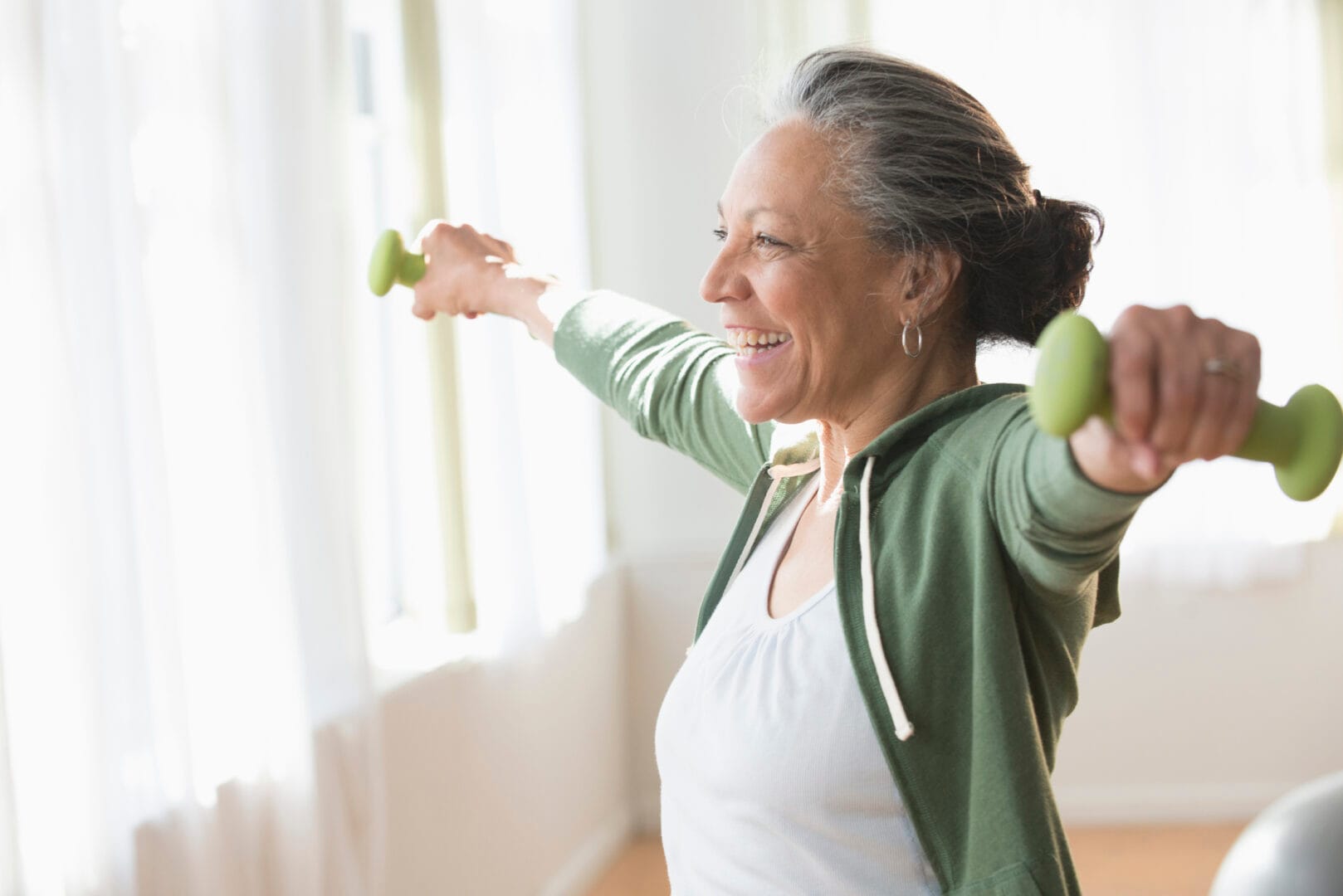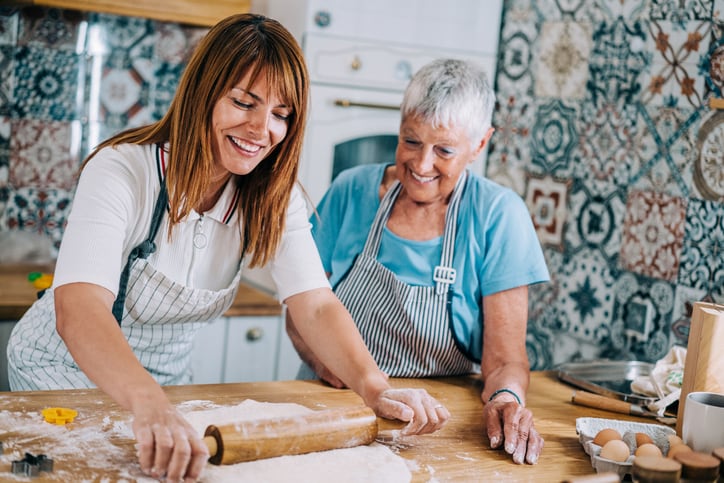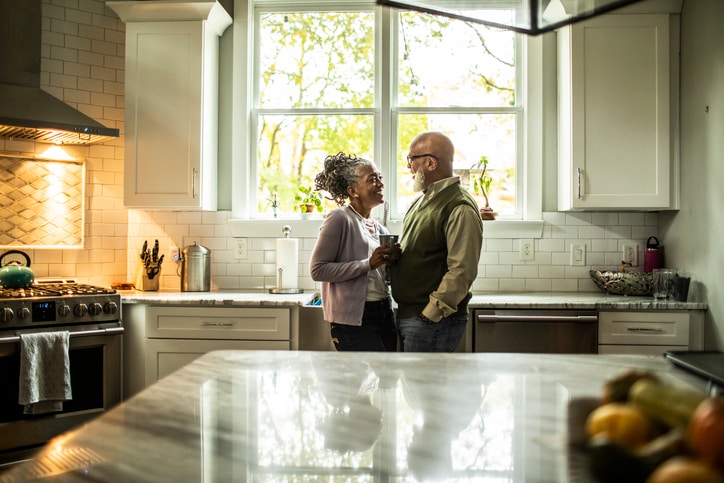When it comes to health for seniors, there’s a pervasive narrative that paints seniors as on a steady decline — that their best years are behind them, and the road ahead will be littered with health complications. But that showcases a very, very narrow point-of-view. In fact, older age can bring some of the most fulfilling, thriving years of a person’s life — so long as that person has prioritized a few aspects of their senior health, experts say.
Dr. Ronna New, a geriatrician with Holston Medical Group, notes that there are some conditions that can be considered “normal aging” — say, changes in vision or hearing — but there are plenty of health complications that can be reduced, or avoided entirely.
“For example, falls are a big risk, but staying physically active helps to keep us strong as we age and also decreases the risk of falling,” she points out. “Memory loss is more likely to occur as we age. However, staying active with our minds by reading and learning new things helps, as does staying socially active and engaged with others.”
Here, experts share the top senior health tips that caregivers can take to help seniors prolong good health (and prevent complications) throughout the years.
“Staying active with our minds by reading and learning new things helps, as does staying socially active and engaged with others.
—Dr. Ronna New, geriatrician
Health tips for seniors
1. Keep in close contact with their primary care physician
Studies have shown that having a primary care physician can drastically improve health outlook for seniors — and it’s something New stresses.
There are certain risks as we age that can sometimes be decreased if a senior’s health care provider has knowledge of the aging process and risks and can advise [seniors] on the best ways to decrease those risks, she explains. “As we age, it is important to have a good relationship with a healthcare provider to discuss screenings and other preventative services that are recommended for seniors,” adds New.
2. Prioritize physical activity and focus knee and hip joint mobility
When a senior’s physical activity level decreases, it can often weaken the muscles surrounding the knees — so the tissue has to work harder, points out Dr. Fred Cushner, an orthopedic surgeon at the Hospital for Special Surgery in New York City. In this instance, he says, “people with arthritis can experience worse symptoms and those without arthritis can develop tendonitis.”
He notes that working on flexibility and range of motion with the knee and hip joints can lead to an improved quality of life. “Problems with your hip can result in problems with your back,” Cushner explains. “And flexibility is important to perform everyday activities, like putting on your socks. Daily chores become even more difficult if you lose flexibility in your knees.”
He recommends that seniors ride a stationary bike to avoid putting too much pressure on the knee. “I recommend at least 15 to 20 minutes with a goal of 30 minutes three to four times per week,” says Cushner.
He also says that, even though seniors might feel the need to take it slow, it’s important that they feel some exertion. Multitasking (think: reading a newspaper) is a no-no, as seniors should be focused on their workout and building a sweat.
And as long as the older adult doesn’t have severe arthritis in their knee, about 30 minutes of brisk walking daily can work wonders in supporting [a senior person’s] health,” advises Nancy Mitchell, a registered geriatric nurse and writer for the Assisted Living Center.
Walking and stationary bike work aren’t the only activities designed to boost strength and stability, according to experts. Check out this roundup of exercises to try for seniors of all fitness abilities.
3. Prepare small, fiber- and veggie-packed meals
As New explains, a senior’s digestive tract undergoes changes in their later years — which calls for changes in the way they eat as well.
“Seniors often do better with small, frequent meals or snacks throughout the day, as opposed to three large meals,” she says. “There are changes in our digestive system and how we process foods as we age and many times, seniors feel better when they eat smaller amounts of food more frequently.”
What’s more, Mitchell notes that digestive issues often stem from weakened gut muscles with age. But there’s a helpful fix. “Get more fiber into their diet,” she recommends. “The bulkiness from fiber stimulates greater muscle contractions.”
Here are a few fiber-rich foods to weave into a senior’s diet:
- Oatmeal
- Quinoa
- Beans
- Broccoli
- Apples
- Berries
Additionally, the National Council on Aging recommends a few other key nutrition tips for seniors:
- Prioritize certain nutrients: Aim to incorporate lean protein (like seafood, eggs, turkey, chicken and tofu), fruits and vegetables, whole grains and low-fat dairy into a senior’s diet throughout the day. Here’s how to determine an appropriate serving size. MyPlate.gov also provides an easy-to-gauge tool for estimating appropriate serving sizes.
- Look at nutrition labels. Reach for products lower in salt, sugar, fat and preservatives.
- See if they might qualify for financial assistance with food. Supplemental Nutrition Assistance Program (SNAP) pairs qualifying seniors with local food banks. Learn more here.
Routine screenings can alert seniors to potential health problems, such as prostate cancer, breast cancer, prediabetes and heart disease.
—Tina M. Baxter, gerontological nurse practitioner
4. Plan for changes in taste perception and thirst
As New explains, a senior’s taste buds (and thirst perception) will shift with age, so it’s important to shift eating and drinking habits, too.
“We tend to have less sense of thirst, as well as taste sensations as we age,” she explains, adding that this makes it even more important to get enough fluids throughout the day.
Although the amount a person should consume is highly dependent on a number of factors (again, something a primary care physician can assist with!), the Mayo Clinic recommends about 3.7 liters per day for men and 2.7 for women.
Dr. New also says it’s common for older adults to have a diminished taste for salt, causing them to continuously reach for the shaker. Her advice when a salt craving calls: Substitute salt for lemon in dishes.
5. Stay on top of screenings and vaccinations
Routine screenings can alert to potential senior health problems, such as prostate cancer, breast cancer, prediabetes and heart disease, points out Tina M. Baxter, a board-certified gerontological nurse practitioner.
And certain screenings become even more important as the years go by, points out New. “For example, bone density scans are very important as we age, as they can detect if bones are becoming weak,” she explains. “If osteopenia or osteoporosis is identified on a bone density screening, measures can be taken to try to help increase bone strength and this can help prevent fractures.”
While New stresses that the most important thing a senior can do is stay in communication with their primary care physician for what screenings and vaccinations to prioritize, here are a few common ones:
- A yearly eye exam. “Glaucoma and cataracts are common among seniors. But you can avoid vision loss with early detection. A yearly eye exam could save most patients from severely compromised health,” explains Mitchell.
- A colorectal cancer exam. Risk increases with age, and the odds are even higher for elderly with a history of tobacco smoking, low-fiber diets or untreated digestive inflammatory diseases, says Mitchell. All adults over 45 with normal risk should expect a colonoscopy every 10 years or a CT colonography or flexible sigmoidoscopy every five years. (Folks older than 75 should discuss the benefit of having an exam with their doctor.)
- Breast exam (women). For women between the ages of 65 and 74, aim for a mammogram every two years, the CDC says. For seniors older than 75, consult with a doctor first.
- Bone mineral density test. The American College of Obstetricians recommends that women start receiving bone mineral density tests to look for signs of osteoporosis at age 65, then again every 15 years if otherwise healthy. However, a doctor might recommend a senior person receive more frequent tests if deemed necessary.
- The Shingrix, Tdap vaccine, COVID, pneumonia and influenza vaccines. Again, New stresses that caregivers work directly with primary care physicians to ensure a senior is up-to-date. “It is important to not only discuss recommended vaccinations with a healthcare provider, but the recommended timeline for each of them as well as remembering that some of them need to be repeated, such as the yearly flu vaccine.” Here’s the CDC’s general timeline for each of those vaccines.
The bottom line: Senior health does not have to be synonymous with slowing down. Seniors can take plenty of steps — from keeping up with routine screenings to making regular exercise a part of their routine — to not only avoid chronic health issues but boost their physical and mental health.





